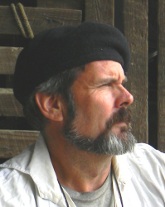You are hereCupola handrails
Cupola handrails
This page is about restoration work being done on an historic wooden caboose, LRS 11. It will be available as part of the Rambler train, an attraction in Knoxville Tn that is open to the public. For more information, click on the red link below.
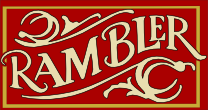 Ride the Rambler!
Ride the Rambler!
In order to remove wood from the cupola of this caboose, I had to remove the metal handrails at the four corners. Each handrail is mounted in three places; the two outer bolts go through the facia boards, while the middle suport is screwed into the roof. we are replacing the old tar paper roof with modern rubber roofing; and plan on redesigning the middle support. It's the one that wraps around the handrail at the corner. the plan is to extend it down to a large flat bar support at each corner of the cupola. I want to hand forge the new pieces; using low carbon steel, metalurgical grade coal, a forge, and an anvil. A closer examination of the handrails reveals one of the three that appears to have a different method of manufacture. I want to inquire with experts as to the methods used, as well as advice on forming the flat sections that have the bolt holes in them. I can think of no better place than Anvil Fire, an extensive website.
I'll post the pictures here, as I'm not certain that I can at that forum. Either way, I'll add the details of the discussion to this page as I can, along with my progress on the handrails.
The first two pictures show two of the handrails in their entirety. The first one is typical of three, the second picture shows that handrail that is different. I was talking to a man who was present when the caboose was pulled from its siding where it had been parked for years. This was prior to its first restoration; I am performin the second restoration. He said that Kudzu vines had grown up around the caboose to the degree that when it was pulled out, much of the wood siding stayed behind. I'm wondering if a handrail or three stayed behind too. Unfortunately, the man that did the first restoration has passed away, so I can't ask him questions.
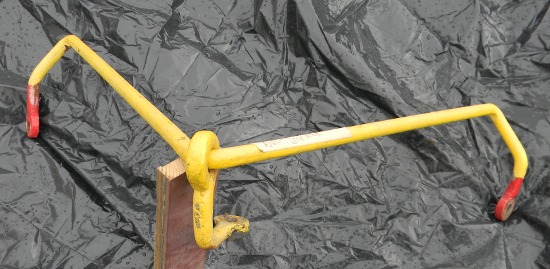
The next picture is the lone handrail; notice how rounded the corners are, and there are also differences shown below.
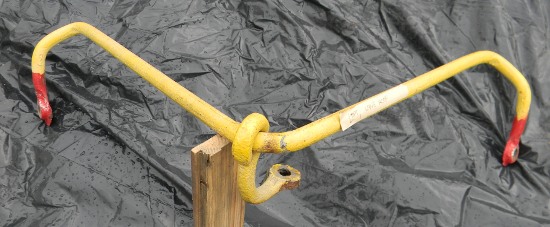
In the next picture, I've put the ends together. The different one is second from the left. The picture below that shows a closer view. Notice how the different one has a curved side that tapers out into a thin, almost sharp edge. It's this way on both ends of this handrail.
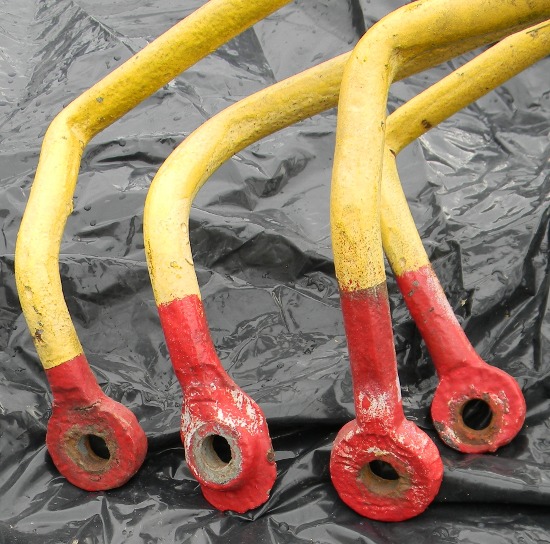
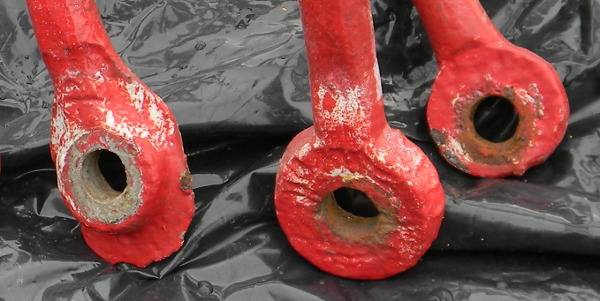
I did notice that on the end of the caboose, there is a handrail attached to the frame, it has the same curved edge ends as the different cupola handrail. Is it possible that the lone handrail is original, and the other three are made later?
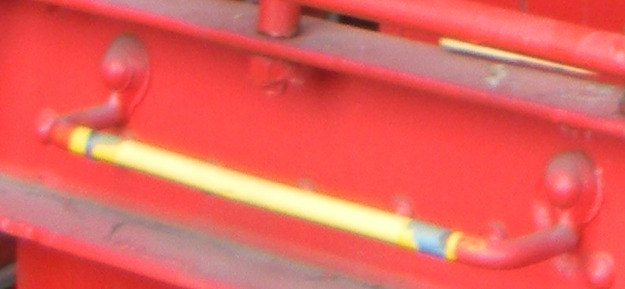
Update: I received some great feedback at the Anvilfire forum, here's the first reply:
_______________________________________________
Caboose handrails... :
Jim, Tom Troszak of Phoenix Hammers has a photo demo of making a rail car handle. Rather than upsetting which is difficult without an upsetter a heavy bar has two balls forged on the ends then the middle drawn out.
See Phoenixhammer.com demos, demo2
Relatively long rails can be made this way. However, in a forging shop with an upsetter they would upset the balls on the end as you summize and then flatten them.
The difference between the two methods is the availability of machinery and the application. Most railroad maintenance shops could make short handles and rails on a tooling hammer but a rail car manufacturer would make them on an upsetter OR have a contractor make them.
- guru - Tuesday, 03/05/13 01:25:26 EST
_________________________________________________________
He also went on to say:
________________________________________________________
Caboose handrails middle support :
The problem, I see with making the middle supports is that they were made first, the rail threaded through and the second end made. If these are missing then they were probably torched off for some reason.
That one rail with the flared out end was made in a one sided die under a power hammer. It looks like the die was not a very good design.
___________________________________________________________
A word of caution: that website is so informative, with such great discussions, that it'll suck you in and keep you up late. Others pitched into the discussion, and, in regards to the mention of vines above, Guru related the saga of an old house that had been overrun by enormous vines. I haven't been there in awhile; last time I was thre they were having a discussion about working on tidewater electric generators under harsh conditions, and another discussion about anti sieze compounds. There was a contribution by a man that worked at a nuclear plant. They tested various anti sieze compounds on large bolts. Good stuff man, check it out:
